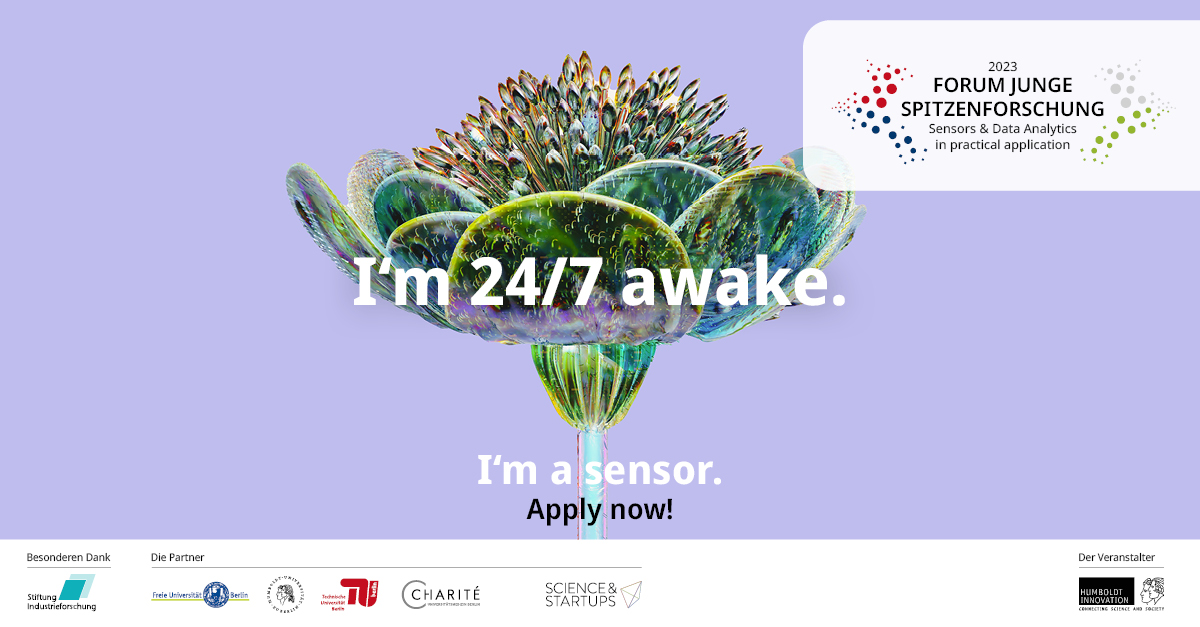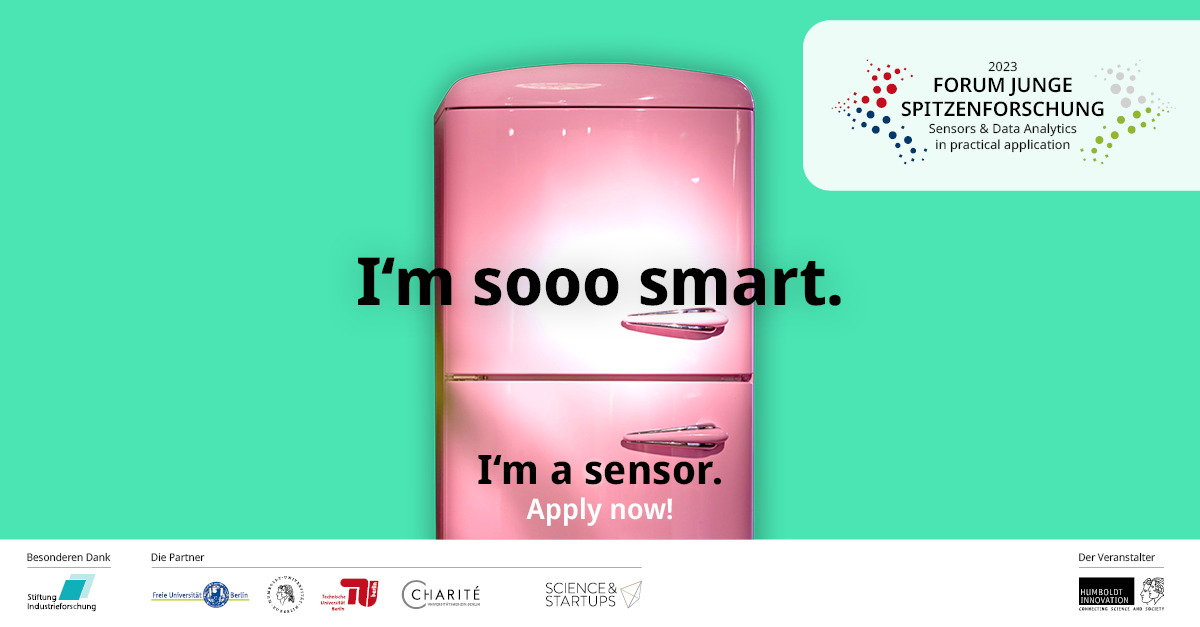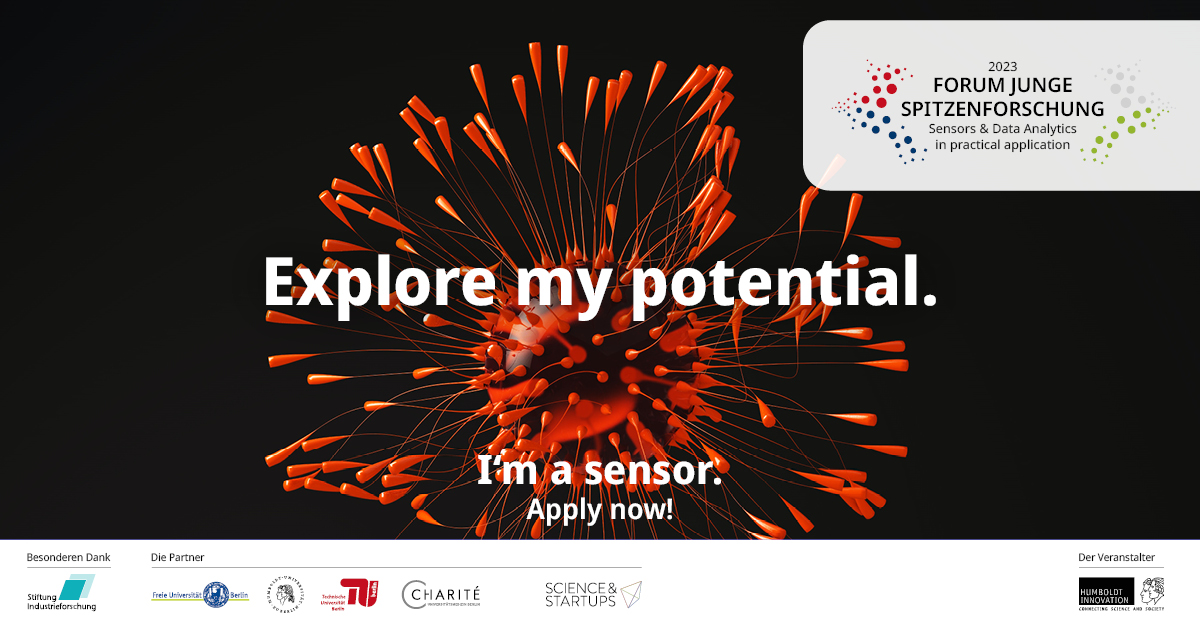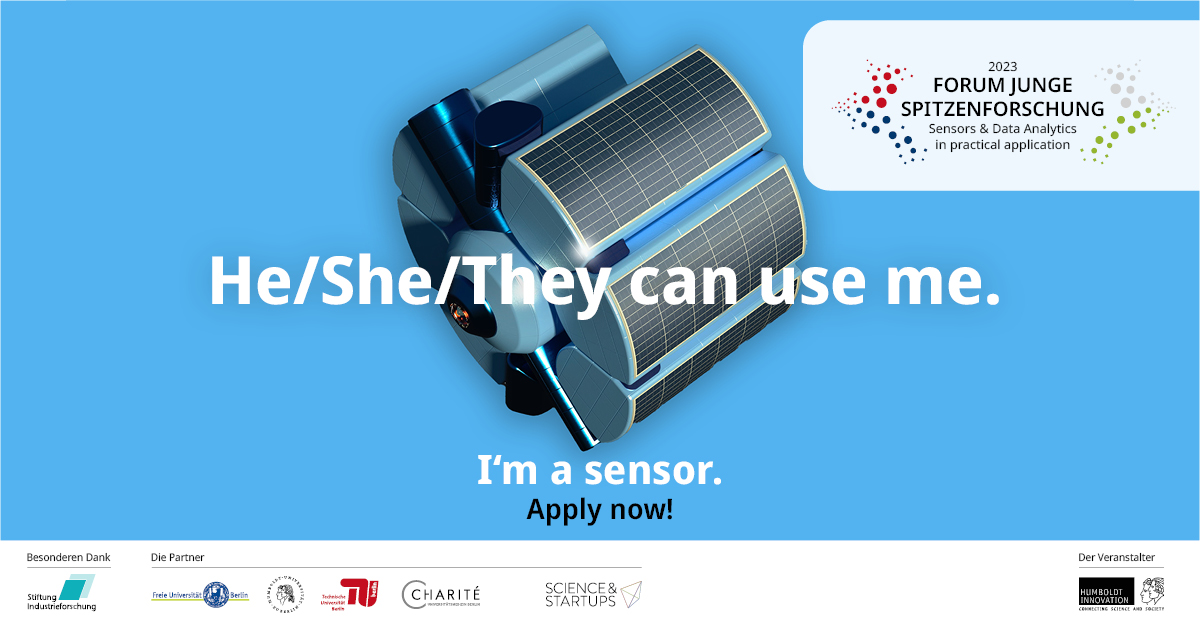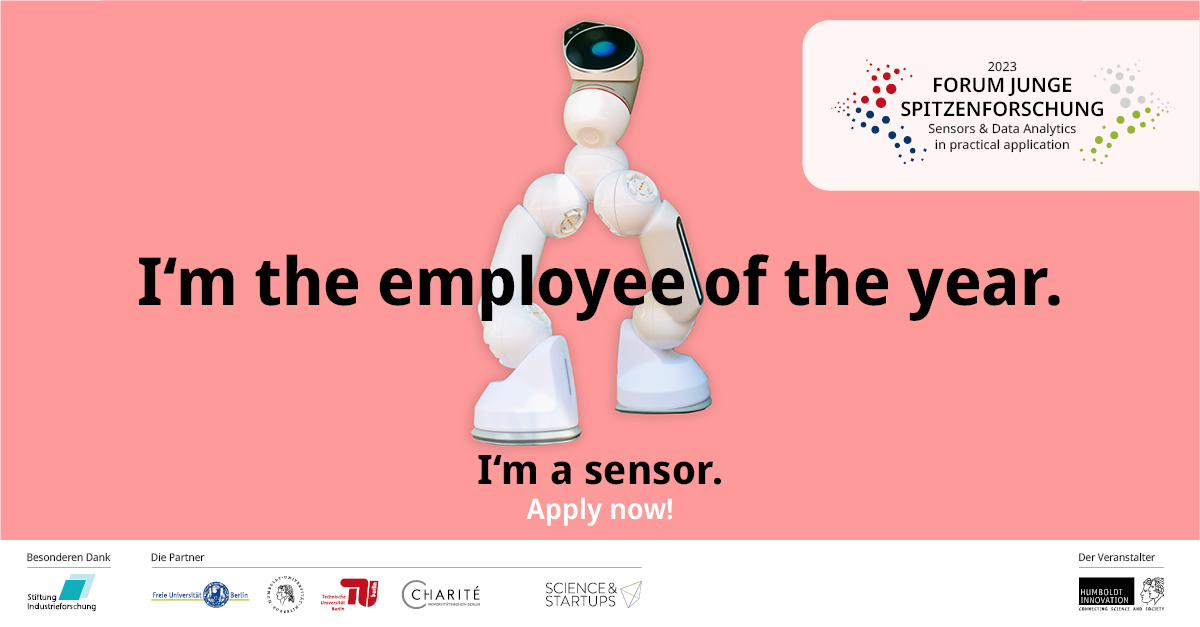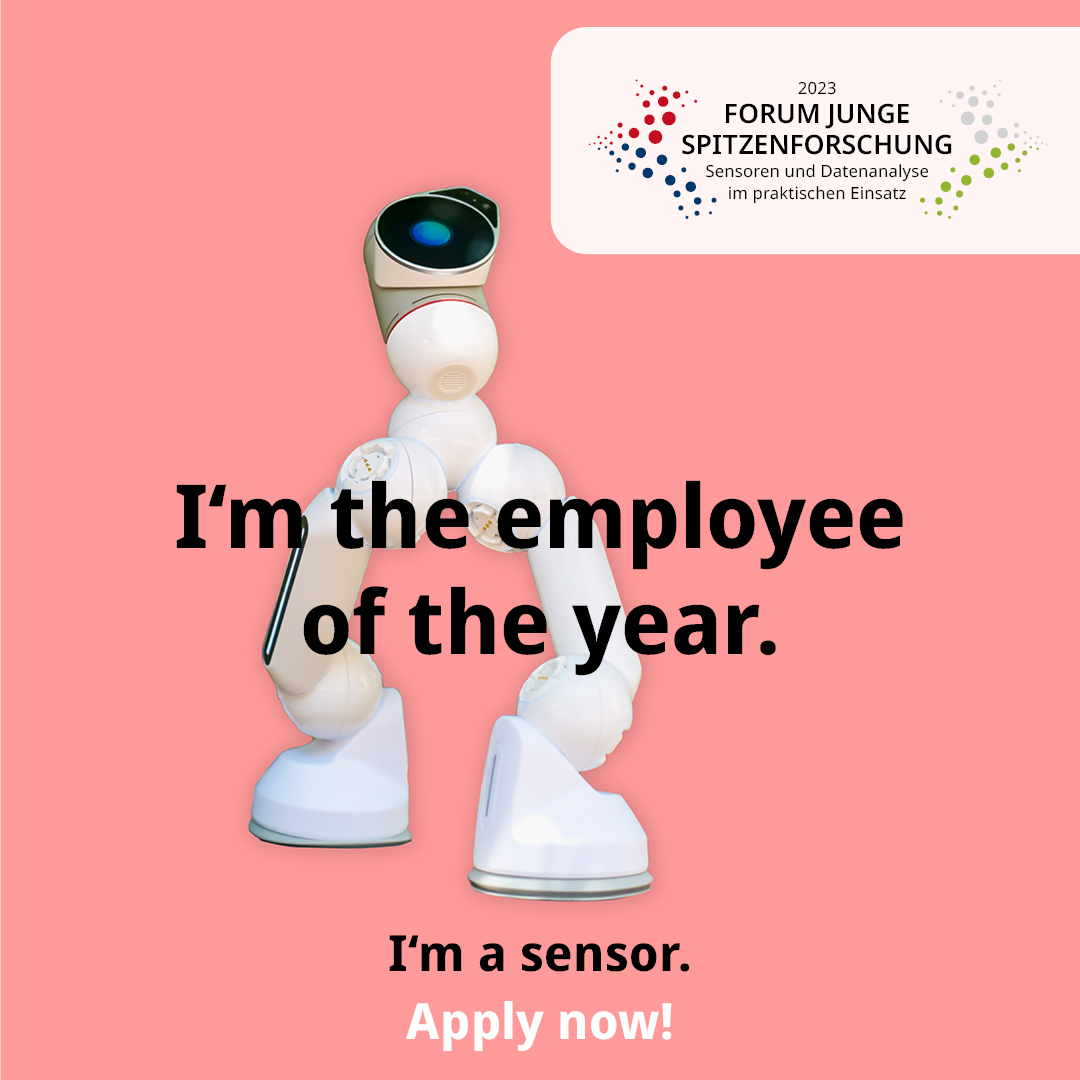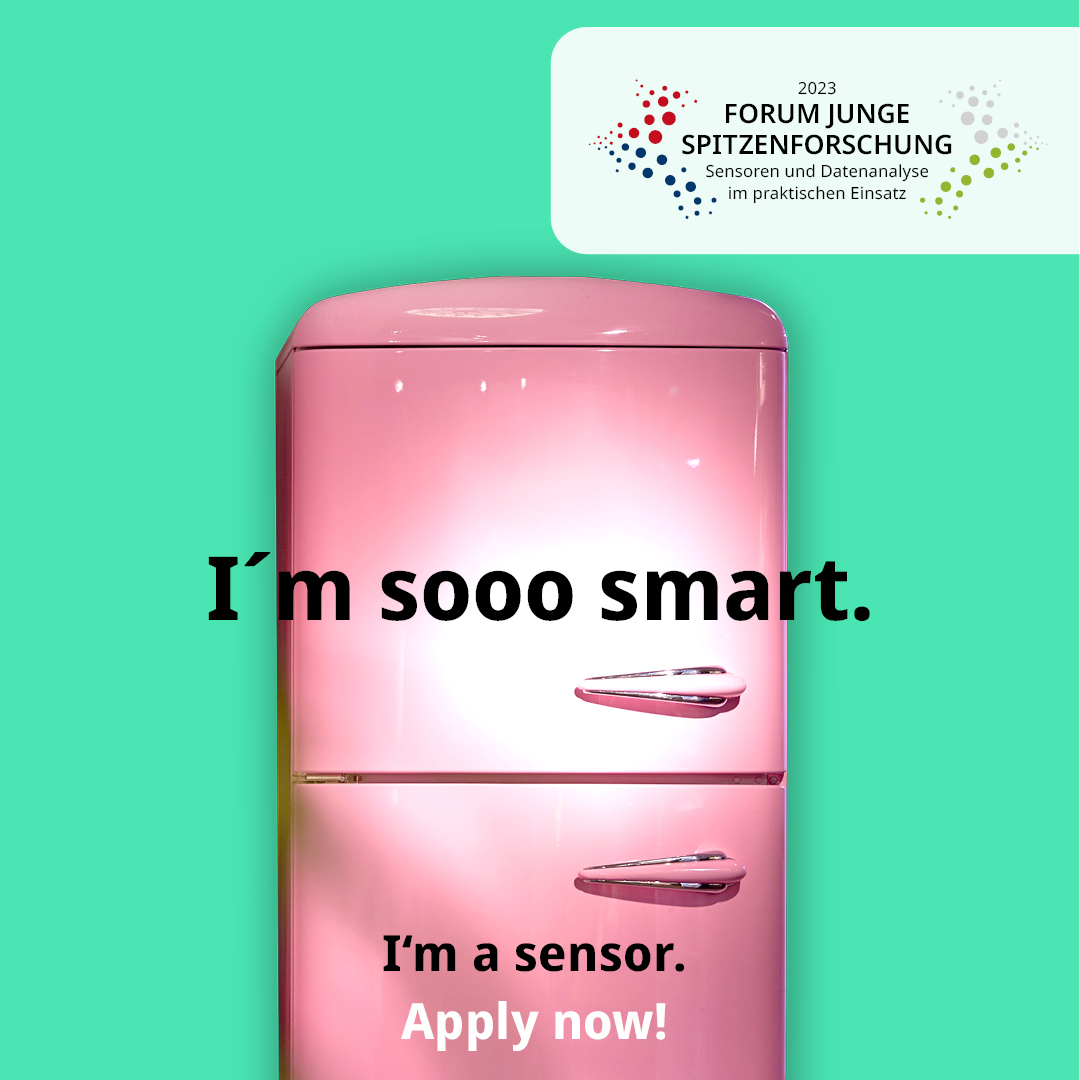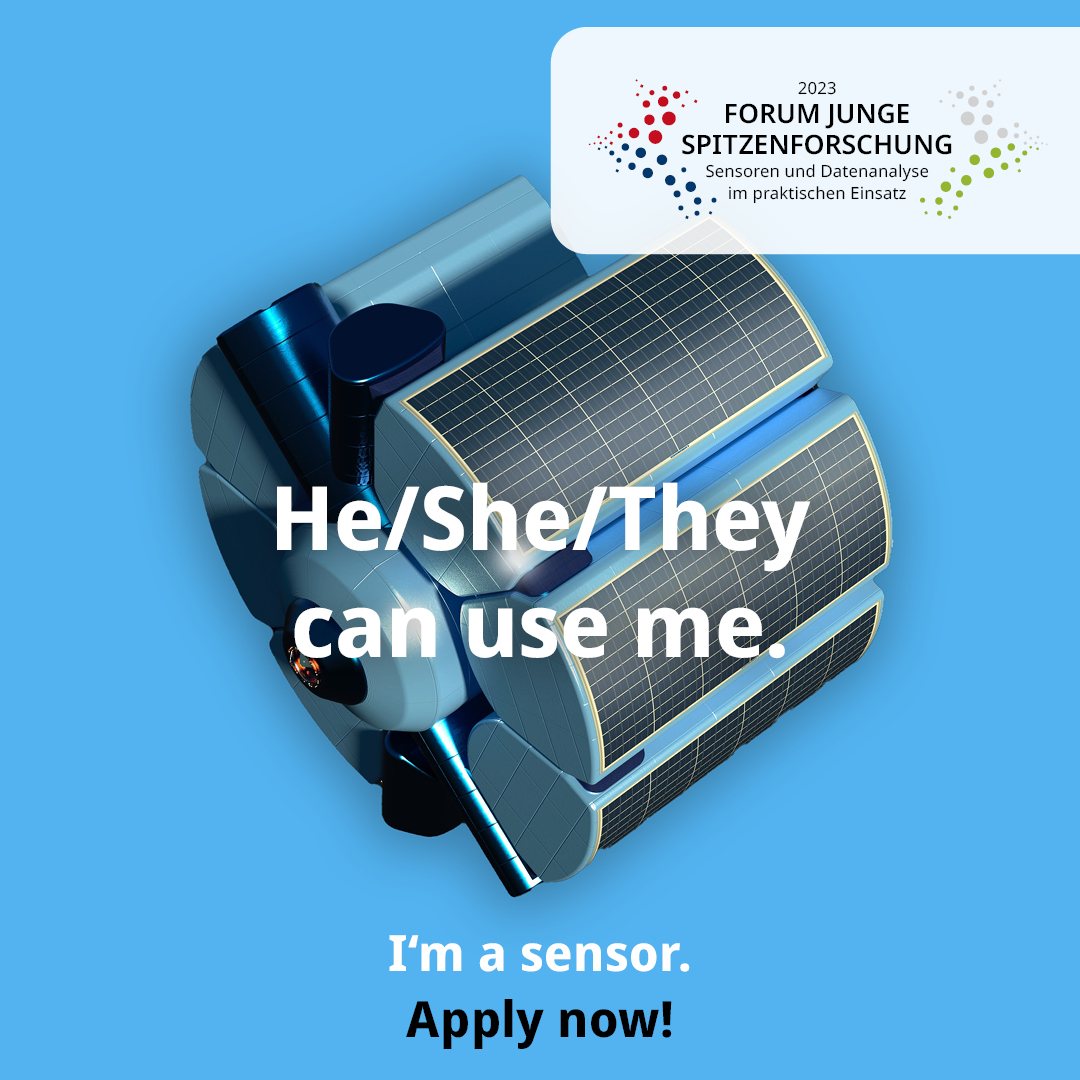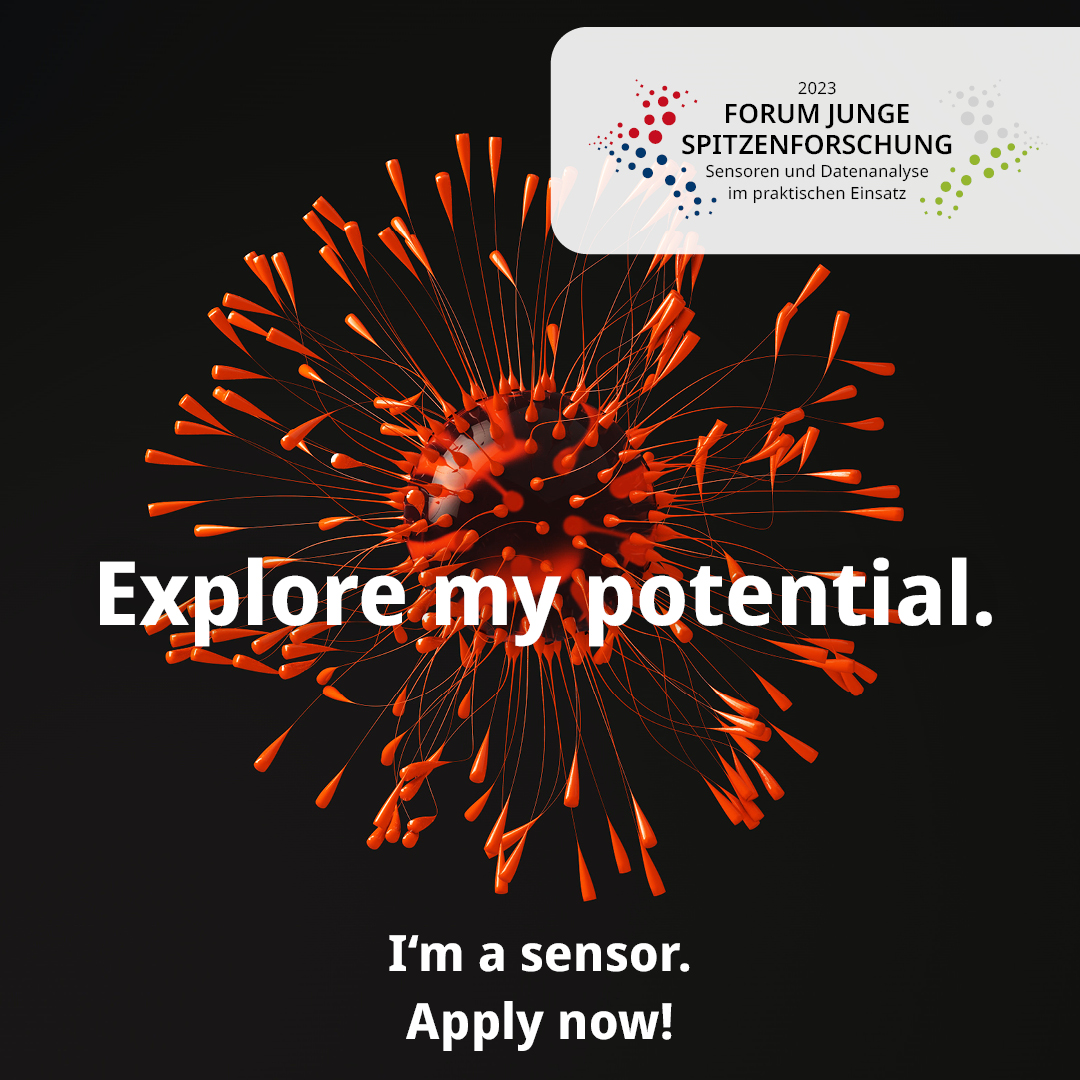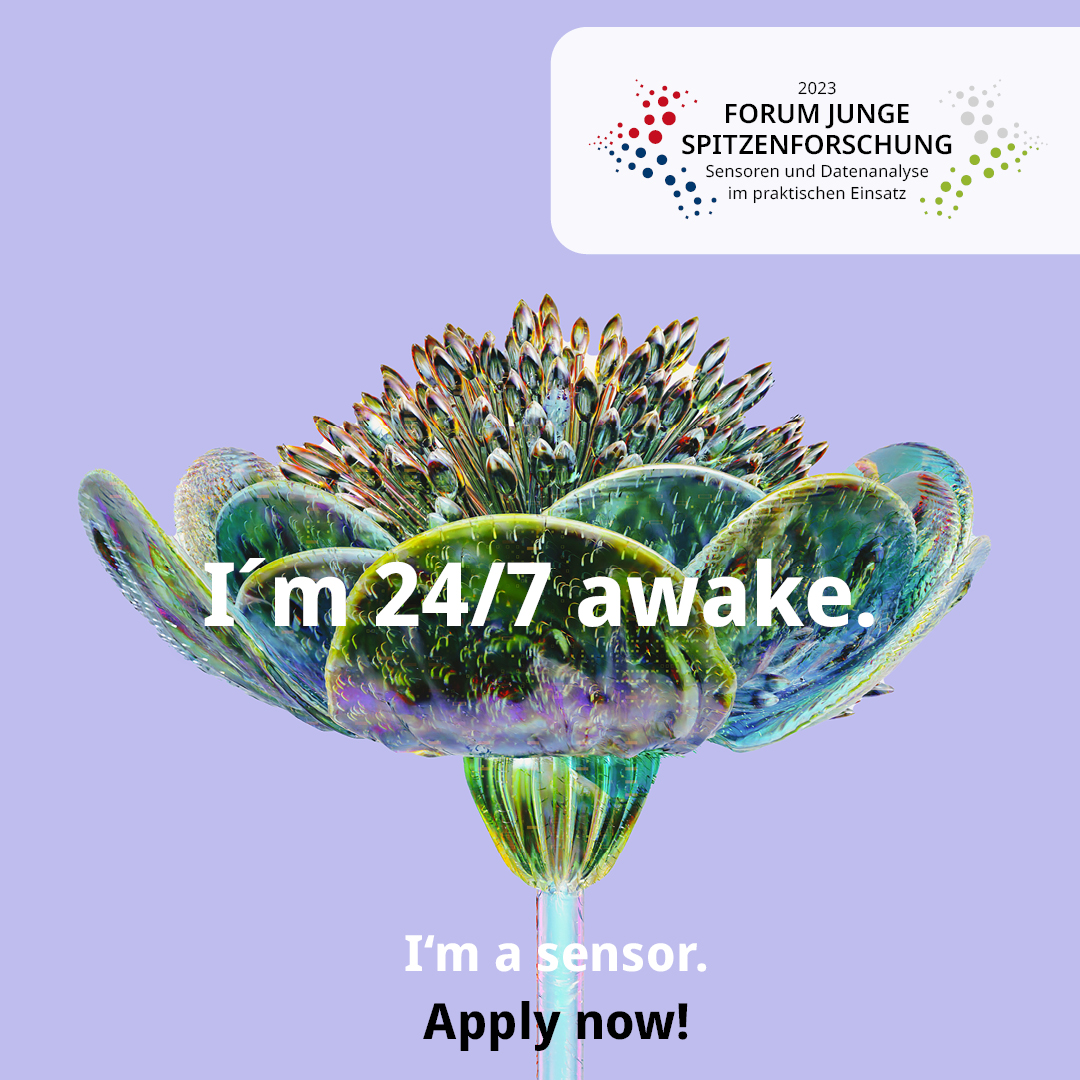Forum Junge Spitzenforschung
Review 2023
The "Forum Junge Spitzenforschung" awards prizes for the most innovative applications on the topic of "Food & Nutritions". Six young researchers received prizes.
On November 14, 2023, the tenth edition of the young researchers' competition for application ideas from research took place. Six teams of young scientists competed with their ideas in front of a jury of top-class business experts and the audience for the first place, endowed with 10,000 € for free further use in the context of their own research! Second and third place are endowed with € 8,000 and € 6,000, respectively, and the remaining finalists received € 2,000 in prize money.
The following research projects were awarded with their application ideas:
1st place: Chip-integrierte Diamant-NV-Quantenmagnetfeldkameras, HU Berlin
2nd place: leaf.IQ, HU Berlin
3rd place: Smarter Limonen-Leberfunktionstest, FU Berlin
In each case, 4th place was awarded to:
CP-Diadem, TU Berlin
FLIM-ROX: Analysesystem für oxidativen Stress, FU Berlin
Near-field Microscope with Quantum Light , HU Berlin
Contact
Jury & Keynote Speaker 2023

Dr. Henriette Nowothnick

Dr. Henriette Nowothnick
CSO, DUDE CHEM GmbH
Henriette Nowothnick is CSO and co-founder of DUDE Chem GmbH since 2019. As a virtual deep tech manufacturer, we enable a greener supply of active pharmaceuticals and their intermediates in order to transform the current pharma-chemical industry into an environmentally benign sector. In order to achieve this, sensors and data processing play a crucial role.
Nowothnick studied Chemistry at the TU-Berlin from where she received her PhD. She published in Angewandte Chemie as well as a patent application was filed. Afterwars she joined a programme of the European Community at TU Eindhoven as Postdoc. She worked for DexLeChem GmbH as Head of Catalysis, -a spin-off of the cluster of Excellence: Unicat „Unifying concepts in catalysis“- before joining DUDE Chem.

Peter Krause

Peter Krause
Managing Director, Insenso GmbH
Peter Krause studied physics at Humboldt-Universität zu Berlin from 1985 to 1990. As a research assistant at the TU Berlin, he acquired extensive knowledge in the field of MEMS sensor technology. At First Sensor Technology GmbH, which he co-founded in 1999 and which later became First Sensor AG, he was responsible for technology and strategic alliances in various positions. In 2020, he decided to return to entrepreneurial activities in smaller innovative companies as a managing director and has since managed the sensor companies Prignitz Mikrosystemtechnik and Insenso GmbH. Since 2015, Peter Krause has been a board member of the AMA, the German Association for Sensors and Measurement, and since 2013 he has been a member of the OpTecBB board.

Dr. Nadja Hatzijordanou

Dr. Nadja Hatzijordanou
CEO, FactoryPal GmbH
Nadja heads FactoryPal as CEO since August 2022. FactoryPal, a 100% Körber owned subsidiaries, is a B2B SaaS company that optimizes production lines worldwide with the power of data and AI. Before leading the Venture Building activities in the international technology group Körber, she worked for investment companies Hasso Plattner Ventures and the HPI Seed Fund, and closely with their portfolio ventures. She founded her first start-up right after university, was born in Berlin, and holds a doctorate in entrepreneurship.

Ute Franke

Ute Franke
CEO, 5micron GmbH
More than 15 years of experience as a sales engineer and innovation manager had its start at the Brandenburg airship company Cargo Lifter AG. After moving to FTI Engineering Network GmbH in Berlin in 2002, Ute Franke built up business relationships with Rolls-Royce and Embraer as Key Account Manager. As head of the "New Technologies" department, she realized national and international research projects in the aviation sector there. Since 2015, she has been co-founder and managing director of 5micron GmbH in Berlin Adlershof. With her team, she develops innovative measurement systems that transform machines, spaces and infrastructure into valuable IoT data sources.

Lothar Feige

Lothar Feige
Managing Director, PIKK-Systems GmbH
After studying mathematics and communications engineering and after two short engagements as a development engineer, Lothar Feige founded the high-tech forge "Cluster-Labs" in 1999 to develop highly integrated x86-based blade server systems - at a time when the term blade server did not even exist. In 2005, pikkerton GmbH was founded, a Berlin-based sensor and radio expert whose successor company "PIKK-Systems" he still heads today. Focus topics are applications concerning energy detection and optimisation as well as innovative, contactless fall detection sensors and reporting systems for elderly people or people at risk of falling.

Enri Chantal Shamsrizi

Enri Chantal Shamsrizi
Innovation Manager, TÜV NORD GROUP
Enri Chantal Shamsrizi née Strobel is an experienced Innovation Manager and startup founder. She was the founder and CEO of HorseAnalytics, a SportsTech / Animal Health startup in Hanover, and was the first female founder from Germany to be invited to the SXSW Accelerator. Previously, she worked for Lars Hinrichs’ Cinco Capital in Hamburg, and later as a consultant at GERMANTECH in Berlin. Today, Shamsrizi works for TÜV NORD and is studying for a part-time Master’s degree at the University of Edinburgh.

André Nikolski

André Nikolski
Co-Director Leap, Humboldt-Innovation GmbH
André Nikolski has been building Tech communities for more than 10 years in various German cities such as Berlin, Leipzig and Kiel. He’s created several coworking spaces, going from initial concept to full capacity, and organized hundreds of workshops, events and conferences to foster a culture of sharing and learning from each other. He is also working as a startup coach and coworking consultant. In his presentation, he will introduce the newly launched technology hub Leap and the Berlin Quantum Alliance.

Dr. Ferdinand Rudolph-Bartels

Dr. Ferdinand Rudolph-Bartels
CTO, LAB14 Group
Dr. Ferdinand Rudolph-Bartels is CTO of LAB14 Group since 2023 and Managing Director of Humboldt-Tech Bridge GmbH since 2020. LAB14 is a group of successful high-tech companies that provide advanced manufacturing and surface analysis solutions. With over 1000 employees the LAB14 group serves customers in the semiconductor and research markets around the world. In addition to his full-time Dr. Rudolph-Bartels has been working as a mentor and committed companion for innovators and start-ups in the high-tech sector for years. With the foundation of the InnoEU Tech Bridge GmbH in 2017 we gave this initiative a home and are concentrating on the support in accelerating global expansion for start-ups and small companies. In 2020 InnoEU has established a joint venture with the Humboldt Innovation GmbH to support science based, early phase entrepreneurs and start ups.
Finalists
Dr. Tom Rubin, Gerome Weiland
Freie Universität Berlin
Smarter Limonen-Leberfunktionstest
Dr. Tom Rubin, Gerome Weiland
Freie Universität Berlin
Smarter Limonen-Leberfunktionstest
An innovative breath test of vital liver function based on limonene (a natural product made from lemons) will be presented. Made possible for the first time by the team's research results, the latest medical findings on improved data analysis of over 10,000 liver function measurement series are combined with in-depth expertise on the latest key technologies for the most accurate gas sensor technology. Guided by an app, the test is child's play. So anyone can do it themselves. This saves on specialised staff, makes the test suitable for everyday use and affordable for everyone at a target price of less than €10. In future, liver damage should be recognised when it is still easily treatable - long before the first symptoms appear. Our research shows that liver damage can be measured in real time, e.g. to optimise the dose and frequency of chemotherapy. Routine, inexpensive and uncomplicated liver tests generally mean a quantum leap in terms of reduced suffering and increased efficiency.
Julian Bopp
Humboldt-Universität zu Berlin
Chip-integrierte Diamant-NV-Quantenmagnetfeldkamera
Julian Bopp
Humboldt-Universität zu Berlin
Chip-integrierte Diamant-NV-Quantenmagnetfeldkamera
"Cameras" for imaging weak magnetic fields, such as those caused by action potentials propagating through nerves, are extremely complex and expensive devices. They are used, for example, in the context of magnetoencephalography in medical diagnostics. In contrast, the magnetic field camera developed here is based on a new, much simpler measuring principle: green pump and infrared measuring laser beams intersect in a diamond chip. Each crossing point defines a camera pixel. Depending on the magnetic field applied, more or less infrared light is absorbed in the diamond, which can be detected. A sample whose magnetic field is to be measured with spatial resolution is placed on the diamond chip. The magnetic field camera works at room temperature and can be compactly integrated into a portable device. In addition to medical applications, it can be used to further develop batteries for the green mobility transition.
Vivian Waldheim, Dr. Natalie Jankowski, Katharina Lorenz
Technische Universität Berlin
CP-Diadem
Vivian Waldheim, Dr. Natalie Jankowski, Katharina Lorenz
Technische Universität Berlin
CP-Diadem
Around one in 500 newborns is born with cerebral palsy (CP), a malformation of the brain that results in restricted movement and muscle spasticity. The earlier CP is diagnosed and targeted therapy is initiated, the lower the physical impairments of the affected children and the resulting consequential damage and costs. Paediatricians check gross motor development as part of the U4 screening, which is scheduled for the third to fourth month of life. However, the quality of the diagnosis depends largely on the qualifications and expertise of the medical staff. As part of the joint CP-Diadem project, a modular technical system is being developed to provide paediatricians with objective diagnostic support. It consists of a sensor mat with piezo sensors, on which the infant is placed, and movement sensors that are attached to the child's limbs. A camera records the infant's movements. The data is collected as part of a study, which is then used to develop algorithms to classify the motor skills of the little patients. The aim is to automatically point out conspicuous movement patterns, which can then be analysed in more detail by experts.
Daniel Hübner, Marcel Glomb
Humboldt-Universität zu Berlin
leaf.IQ
Daniel Hübner, Marcel Glomb
Humboldt-Universität zu Berlin
leaf.IQ
Modern agriculture relies on precise, AI-driven cultivation methods in order to conserve resources and continue to feed a growing world population. The basis for this is a large amount of data in order to understand processes within the plant and to be able to make decisions earlier and more accurately. One of the most important processes is photosynthesis. Both the yield and the energy-intensive accumulation of secondary metabolites, which is crucial for quality, depend heavily on the rate of photosynthesis. A reliable indicator of photosynthetic activity with known environmental parameters is stomatal conductance. The higher the conductivity, the higher the potential diffusion rates of water vapour export and CO2 import of the leaves. However, conventional conductivity measurement methods are time-consuming and measurement ranges are only selective. Our innovative measurement method solves these problems by collecting real-time data over a wide area and modelling stomatal conductivity without relying on the time-consuming installation and maintenance of conventional measurement methods. This enables precise and dynamic control of environmental parameters based on plant physiological processes and leads to energy-efficient production systems and high-quality products.
Jens Balke
Freie Universität Berlin
FLIM-ROX: Analysesystem für oxidativen Stress
Jens Balke
Freie Universität Berlin
FLIM-ROX: Analysesystem für oxidativen Stress
We have developed an innovative method for the sensitive determination of cell-damaging reactive oxygen species (ROS) in our working group. Many new drugs and vaccines have shown the great potential of biomedical research. However, like all external influences (particulate matter, UV light, ozone, environmental pollutants), drugs can also lead to the formation of free radicals, i.e. ROS, within cells and tissues. This is called oxidative stress and can lead to permanent damage in the long term, including premature ageing or cancer, even if ROS production is only slightly increased. The ROS effect also occurs in inflammatory processes. Therefore, there is a need for sensitive high-throughput methods for ROS detection. We have shown that fluorescence lifetime imaging microscopy (FLIM) can be used for sensitive ROS detection (FLIM-ROX). A signature of the ROS reporter dye is used. Using a camera and optics, a prototype is to be realised that can transform FLIM-ROX detection into a widely applicable analysis device.
Dr. Pietro Marabotti, Dr. Sebastian Heeg, Dr. Sven Ramelow
Humboldt-Universität zu Berlin
Near-field Microscope with Quantum Light
Dr. Pietro Marabotti, Dr. Sebastian Heeg, Dr. Sven Ramelow
Humboldt-Universität zu Berlin
Near-field Microscope with Quantum Light
Infrared (IR)-spectroscopy probes the interaction of light with characteristic vibrations in crystals or molecules and gives us insight into their structure. This makes IR spectroscopy a widespread technique in material science, chemistry, physics, and biology. Near-field microscopes enable IR-spectroscopy at nanoscale resolution, but suffer from inefficient and expensive IR-light generation and detection. Quantum light in the form of two entangled photons (one infrared, one visible) can overcome this drawback. While the IR photon interacts with the object of interest, we detect this interaction with the entangled visible photon using efficient and cost-effective devices. We combine these two approaches by integrating IR-light detection by entangled photon pairs into a scanning nearfield optical microscope. Our new instruments will perform nanoscale IR spectroscopy faster, more sensitive, and cheaper than current alternatives by exploiting the quantum nature of light.
Smart Farming?
The whole campaign on "Food & Nutritions".













































